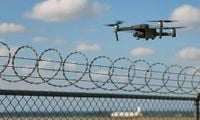Europe’s aviation sector is once again in the grip of uncertainty, but this time the culprit isn’t weather or labor strikes—it’s a wave of drone sightings, real or rumored, that have sent shockwaves from Copenhagen to Munich and beyond. Over the past few weeks, a series of mysterious airborne objects have triggered repeated airport shutdowns, flight diversions, and a surge of speculation about foreign interference, particularly from Russia. Yet, as officials scramble to respond, the line between genuine threat and collective panic has grown increasingly blurred.
The latest round of disruptions began on the evening of September 22, 2025, when Copenhagen Airport—the busiest in the Nordic region—abruptly shut down after reports of two to three large drones flying near its runways. According to DroneDJ, the closure lasted nearly four hours, with flights diverted to Sweden and Germany. Danish officials described the drones as “large” and operated by a “capable operator.” Prime Minister Mette Frederiksen didn’t mince words, calling it “a serious attack on Danish critical infrastructure.” She added that while there was no proof of state involvement, “Russia could not be ruled out.”
That same night, Oslo Airport in Norway faced its own scare. As reported by Reuters and Norway’s NTB news agency, a Norwegian Air pilot reported seeing three to five drones during approach around midnight, leading to a temporary halt in landings. Several flights were delayed or diverted. However, the observation remained unverified, and all operations resumed not long after.
The domino effect was swift. In the days that followed, reports of mysterious flying objects flooded in from Germany, Denmark, Norway, Lithuania, and the Netherlands. Airports across the continent experienced repeated shutdowns and a spike in anti-drone alerts. Officials began to see patterns that hinted at something organized—or at least widespread. Several countries invoked the term “hybrid threat,” a diplomatic signal that foreign interference or coordinated probing was suspected. German Chancellor Friedrich Merz went so far as to suggest that authorities assume some of these incursions are Russian-influenced, echoing confirmed drone incidents in Poland, Lithuania, and Romania.
Yet, for all the alarms, physical evidence remained elusive. In Copenhagen, officials eventually reopened the airport, saying the objects had “disappeared.” In Munich, Schiphol, and Vilnius, similar shutdowns occurred based solely on visual sightings or radar anomalies. Investigations so far have failed to produce hard data: no radar signatures, intercepted control links, or captured devices. This is eerily reminiscent of the infamous 2018 Gatwick Airport shutdown, where over 1,000 flights were canceled amid drone sightings—yet no drone was ever found, as DroneDJ recalls.
Fast forward to October 2025, and the script feels all too familiar. On October 2, Munich Airport experienced its own drone scare. According to Euronews Next and Insurance Business UK, sightings began around 8:30 pm near the airport and surrounding towns, including Freising and Erding. The response was immediate: a preventative closure, 17 flights canceled, 15 more diverted to cities like Stuttgart, Nuremberg, Vienna, and Frankfurt. Almost 3,000 passengers were left stranded overnight, with airport staff distributing blankets and camp beds. Flights resumed at dawn, but the disruption didn’t end there. On October 3, police spotted two more drones near the airport’s north and south runways, but they vanished before identification. The following morning, further sightings led to the cancellation or diversion of another 170 flights.
In response, German authorities installed laser equipment near Munich Airport to help pinpoint the distance of any drones from the site—a move reported by Euronews Next, though not yet independently verified by federal police. The timing couldn’t have been worse: Munich had just wrapped up its annual Oktoberfest, drawing millions, and was hosting a government-led Migration Meeting where drone response was front and center.
These incidents are not isolated. At least 11 European countries—including Lithuania, Latvia, Denmark, Norway, Romania, Poland, Estonia, Germany, Belgium, and France—have reported drone incursions or disruptions over the past three months. European leaders, meeting in Copenhagen in early October, agreed to advance plans for a so-called “drone wall” along the EU’s eastern border, aiming to bolster collective defenses against both real and perceived threats.
But what’s fueling this cycle of panic? Part of the answer lies in the difficulty of distinguishing drones from other airborne objects. At dawn or dusk, a reflective object—be it a balloon, bird, or distant aircraft—can appear to move erratically, especially when viewed from a cockpit or on radar. As DroneDJ notes, several recent “drone sightings” have later turned out to be balloons or even celestial misidentifications. In Lithuania, dozens of supposed drone incursions were actually contraband balloons smuggling cigarettes. In Germany, night-sky reflections and flight lights have been mistaken for hovering drones. Even within Denmark, officials have admitted that some sightings were likely manned aircraft or optical illusions.
Technology isn’t offering much help—yet. Most airport radars are designed to track airplanes, not lightweight quadcopters or balloons. Even modern detection systems struggle to distinguish between a drone and other small airborne clutter. This leaves investigators piecing together often inconsistent eyewitness accounts and cellphone footage. The absence of proof sometimes becomes proof of sophistication: “We couldn’t find it, so it must have been a stealth drone.”
Still, there are genuine threats. In Eastern Europe, confirmed Russian drones have crossed into Poland, Lithuania, and Romania, sometimes shot down by authorities. These incidents lend credibility to fears of state-linked reconnaissance or hybrid attacks. In response, countries like Denmark have temporarily banned civilian drone flights, Lithuania has given its military broader powers to shoot down drones near restricted zones, and NATO has ramped up counter-drone coordination.
The economic and legal fallout is also growing. Charles Röbin, a partner at Clyde & Co, told Insurance Business UK, “The recent drone disruption at Munich Airport highlights a growing risk for the aviation sector.” He pointed out that these incidents “expose gaps in liability attribution and raise questions around business interruption coverage, which often requires physical damage to trigger a claim.” Röbin urges insureds to review policy wording in light of non-damage losses, adding, “With drone threats becoming increasingly common, it is important that insureds reassess how their insurance policies respond to non-physical disruptions and consider broader coverage for emerging risks.”
For U.S. readers, the European situation may feel familiar. In 2024, New York’s Stewart International Airport and several others experienced closures after drone sightings—many of which turned out to be false alarms or misidentified aircraft. Homeland Security officials have noted that the uptick in reports may stem from new regulations allowing nighttime drone operations, emphasizing that no credible foreign threat was identified.
As Europe’s skies remain on edge, the lesson is clear: while vigilance is essential, so is evidence. The rush to label every unknown object a “drone” risks both desensitizing the public and unfairly targeting legitimate drone operators. As regulators tighten rules and airports invest in new detection tech, the balance between caution and confirmation will shape the future of shared airspace. If not, the next shiny balloon at sunset could once again ground thousands, all in the name of safety.





